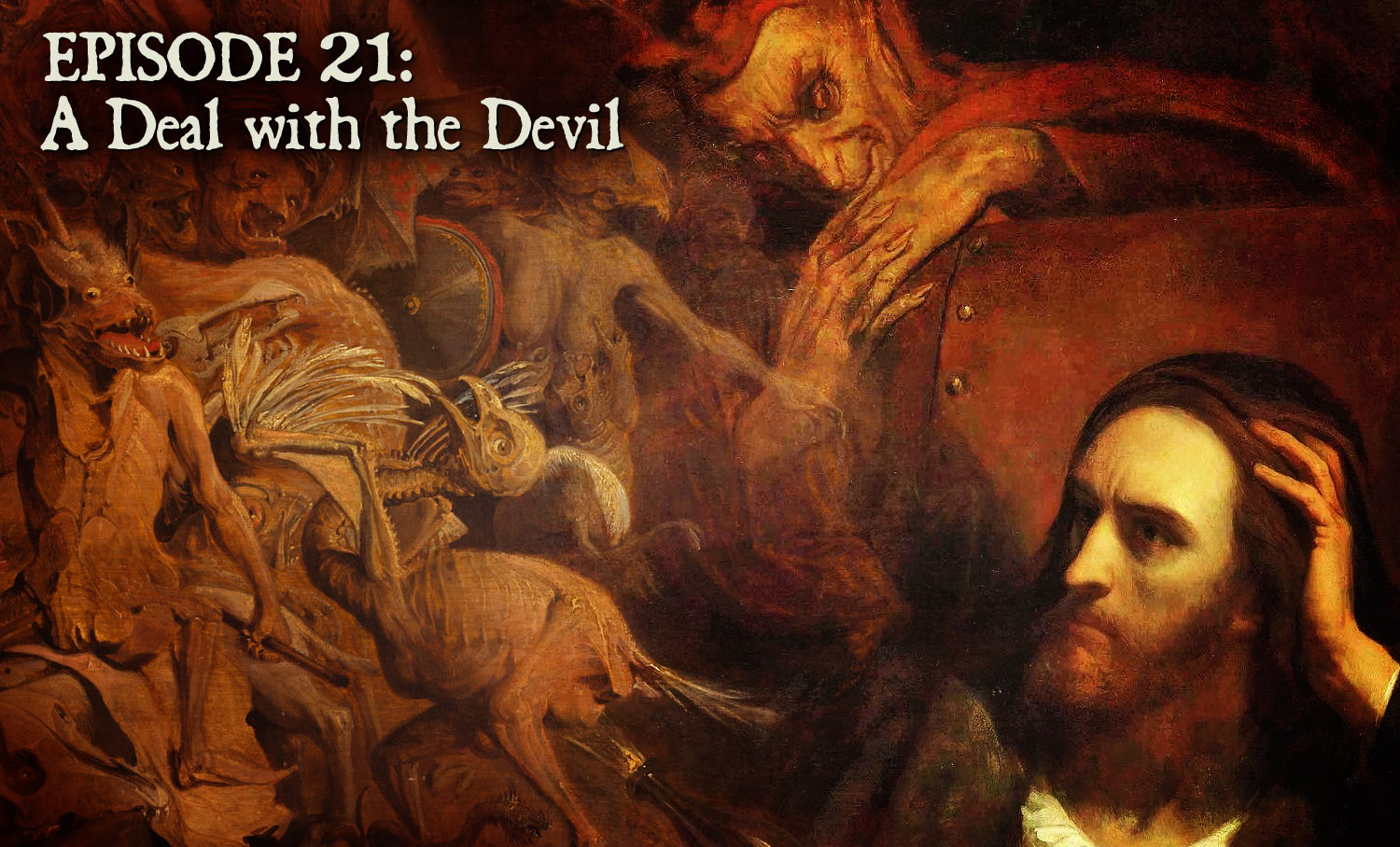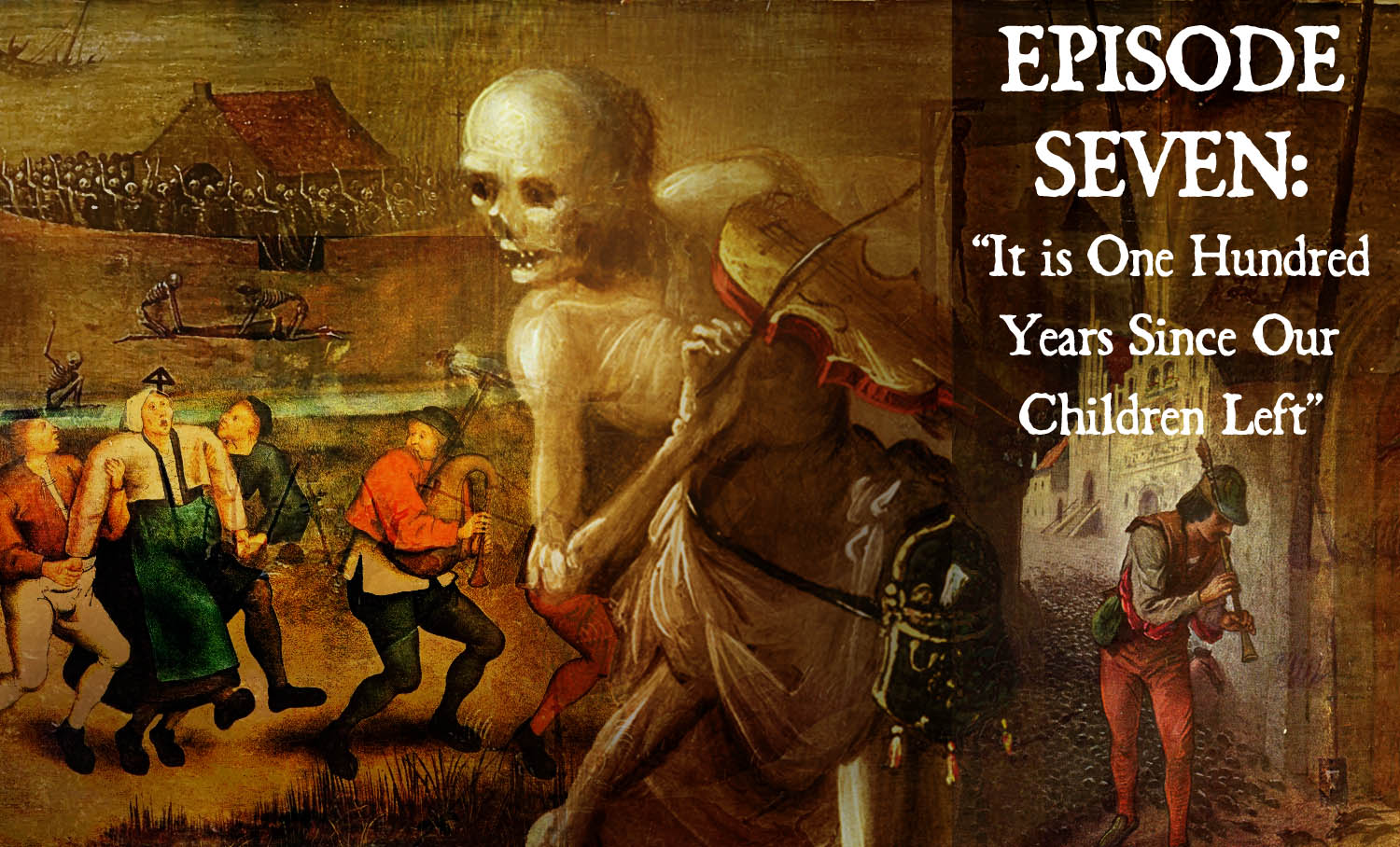
#22 The Devil’s Due: Musicians and Marksmen
Podcast: Play in new window | Download (Duration: 41:12 — 37.7MB)
Subscribe: Apple Podcasts | Spotify | Android | Podchaser | RSS | More
In this episode we look at legends of musicians and marksmen said to have made Faustian deals with the Devil.
We begin with The Phantom of the Opera, a story which does not exactly share our theme, but was set against the backdrop of a staging of the opera Faust by Charles Gounod. The story, written in 19111 by French journalist and writer Gaston Leroux, also has a macabre connection to Der Freischütz (“the marksmen,” for our purposes), the German legend of a marksman who enlists the Devil’s help in a test of marksmanship. This particular connection is discussed at the conclusion of our show, but is one of several historical incidents said to have inspired Leroux’s novel. The establishment of a subterranean lake beneath the Paris opera house and an unfortunate accident with a chandelier in 1896 are discussed in this context.

Next, we hear some clips from Brian DePalma’s 1974 rock-opera-horror-comedy Phantom of the Paradise, a retelling of the Phantom story within the setting of the fictional Paradise rock club. Conveniently enough, DePalma’s film inserts not one but two Faustian pacts with the Devil into its storyline and provides an intro to the topic of the trope of rock musicians making deals with the devil.
After a nod to the overt introduction of Satanic themes into rock-and-roll by the band Coven in their 1969 album Witchcraft Destroys Minds and Reaps Souls (discussed in our last episode), we flash through a few other examples of the trend in the 1960s to arrive at the legend of Robert Johnson’s alleged deal with the Devil at “the crossroads.”

This bit of folklore, which seems to have been spun out of traditional Vodoun and European notions of the magical significance of crossroads, did not attach itself to Robert Johnson until long after the musicians death, and was in fact, first attached to another blues musician by the name “Johnson” (Tommy) long after the death of the latter. We hear brief snatches of Robert Johnson’s songs “Cross Road Blues ” and “Me and the Devil Blues,” said to have inspired the connection of this legend to R. Johnson.
Because of lightweight portability making it ideal for providing music at taverns and secular gatherings, the violin was historically a favorite instrument of the Devil. Baroque composer Giuseppe Tartini reinforced the notion in his story of a dream in which the Devil had become his servant and provided him his Violin Sonata in G minor, better known as the “Devil’s Trill Sonata.” Wilkinson relates his account of the dream, and we hear a bit of the piece.

At least until the advent of rock and roll, the diabolical musician par excellence, however, was violinist and composer Niccolò Paganini (1782 – 1840). Rumors that dogged his career included that of a pact with the Devil, the manifestation of the Devil onstage during his performances, lightning bolts flying from his bow, and that the soul of a women he murdered resided within the strings of his instrument.
Paganini’s diabolical mystique owed much to his unprecedented virtuosity and theatricality on stage, libertine lifestyle, and unusual appearance, which German poet Heinrich Heine described “a corpse risen from the grave, a vampire with a violin.” As for his libertine lifestyle, we hear a bit from a film particularly dwelling on this — Klaus Kinski’s Paganini (1990) directed by and starring the notorious German actor, whose identification with the role appears to have been somewhat pathological.

The macabre postmortem odyssey of Paganini’s body after being denied burial in consecrated ground by the bishop of Nice is discussed at some length. In the background of our Paganini segment, we hear a bit of his Caprice No. 5 played by Sumina Studer.
We then turn to the Freischütz, the German legend of of the Devil providing a huntsmen a number of magic bullets, the majority which are charmed to hit whatever the shooter wishes, while a small fraction remain exclusively under the Devil’s control. While it’s mostly known in its literary or operatic form, I provide some evidence of the story as a matter of actual folk belief, namely a confession made in a Bohemian court by an ambitious hunter charged with visiting the crossroads(!) where he attempted the ritual to create these charmed bullets in 1710.

With the aid of Wilkinson’s dramatic reading, we retell the literary version of the tale from Johann Apel’s 1811 collection of (mainly) traditional ghost and horror stories called The Book of Ghosts. An interesting connection between this volume and Mary Shelley’s Frankenstein is also discussed.
Next we discuss Der Freischütz, an 1821 opera by German Romantic Carl Maria von Weber. It’s a bit cheerier take on the story than Apel’s but does include a sublimely gothic scene in which the magic bullets are cast. We hear a bit about the staging of that scene (moved from the crossroads to a haunted gorge, “Wolf’s Glen”). Behind that description, we hear a chorus of “owls” from the that scene in von Weber’s opera. Our Freischütz discussion also opens with a bit of the overture.

We also hear some bits from the 1990 avant-garde retelling of the Freischütz legend by Tom Waits and William Burroughs — The Black Rider.
The episode ends with the story of how a human skeleton ended up onstage in an 1841 production of Der Freischütz. It’s a tragic tale of an unhappy romance that likely inspired Gaston Leroux to have his Phantom buried beneath the opera house in order to be near to his beloved Christine Daaé after death.








 Byron’s contribution to Gothic literature (as host to Mary Shelley during her early writing of Frankenstein) is illustrated with another snippet from Ken Russel’s cinematic work, his 1986 film
Byron’s contribution to Gothic literature (as host to Mary Shelley during her early writing of Frankenstein) is illustrated with another snippet from Ken Russel’s cinematic work, his 1986 film 















 Our next stop in England is the cave known as Wookey Hole about 20 minutes northeast of Glastonbury. Wilkinson reads us a poem from 1748, “The Witch of Wookey” describing how and why a witch formerly haunting the cave was turned into a stalagmite bearing her likeness. We also learn of Leicester’s Black Annis, a monstrous hag said to occupy a cave in the Dane Hills and do terrible things to children.
Our next stop in England is the cave known as Wookey Hole about 20 minutes northeast of Glastonbury. Wilkinson reads us a poem from 1748, “The Witch of Wookey” describing how and why a witch formerly haunting the cave was turned into a stalagmite bearing her likeness. We also learn of Leicester’s Black Annis, a monstrous hag said to occupy a cave in the Dane Hills and do terrible things to children.














